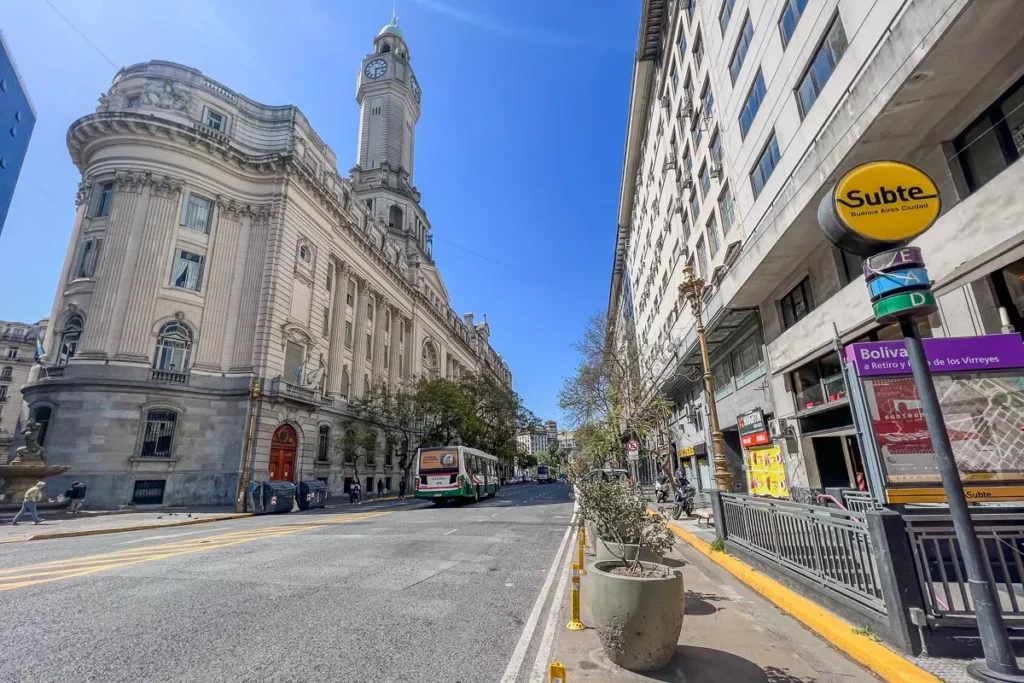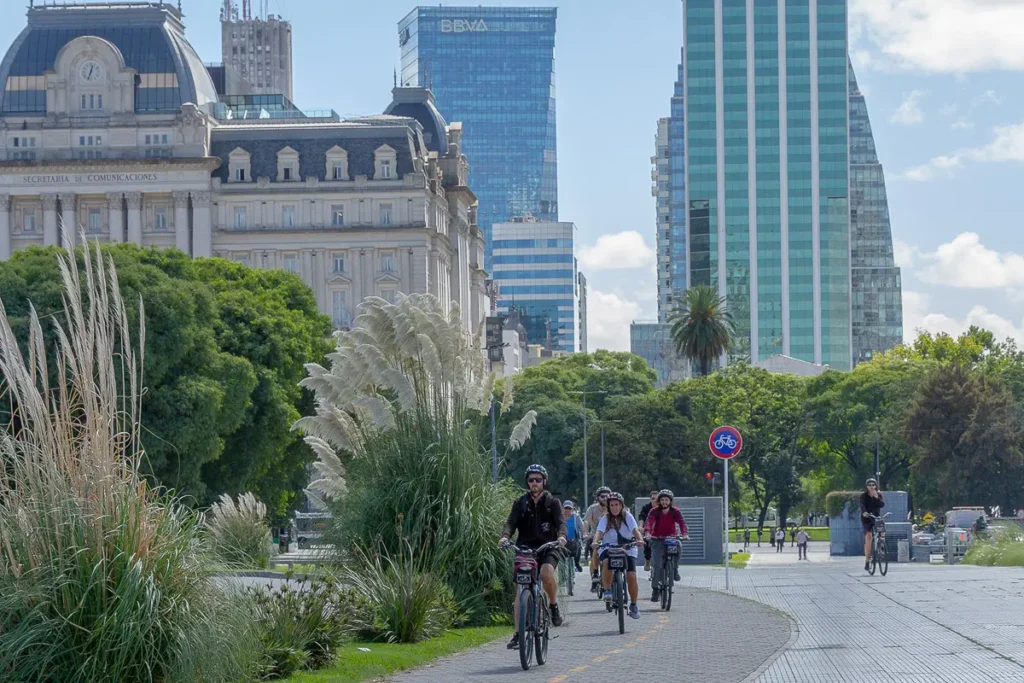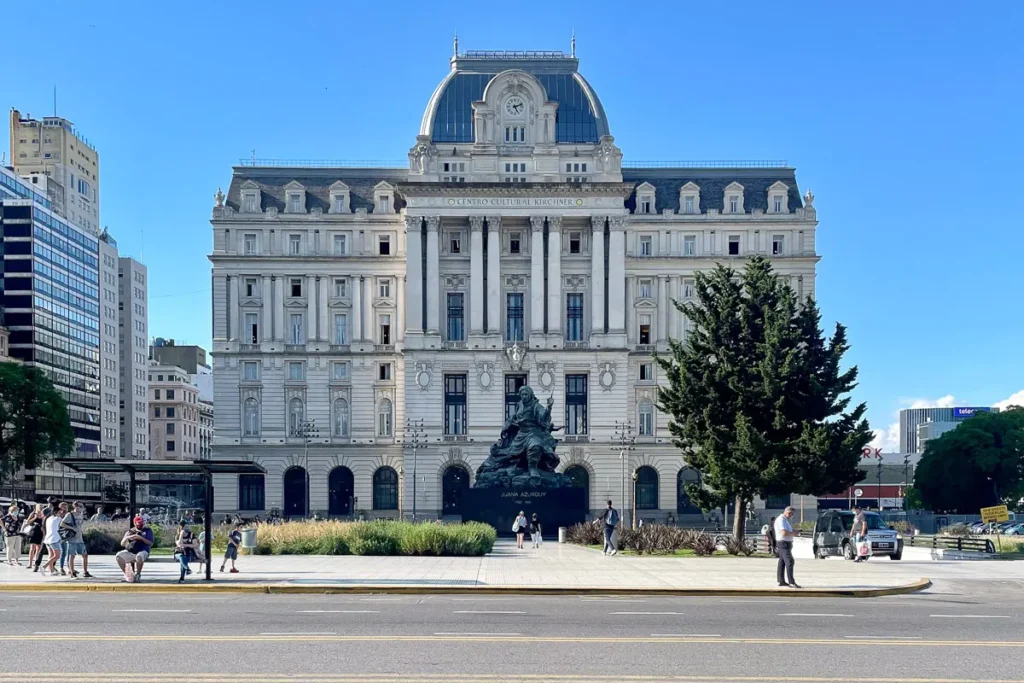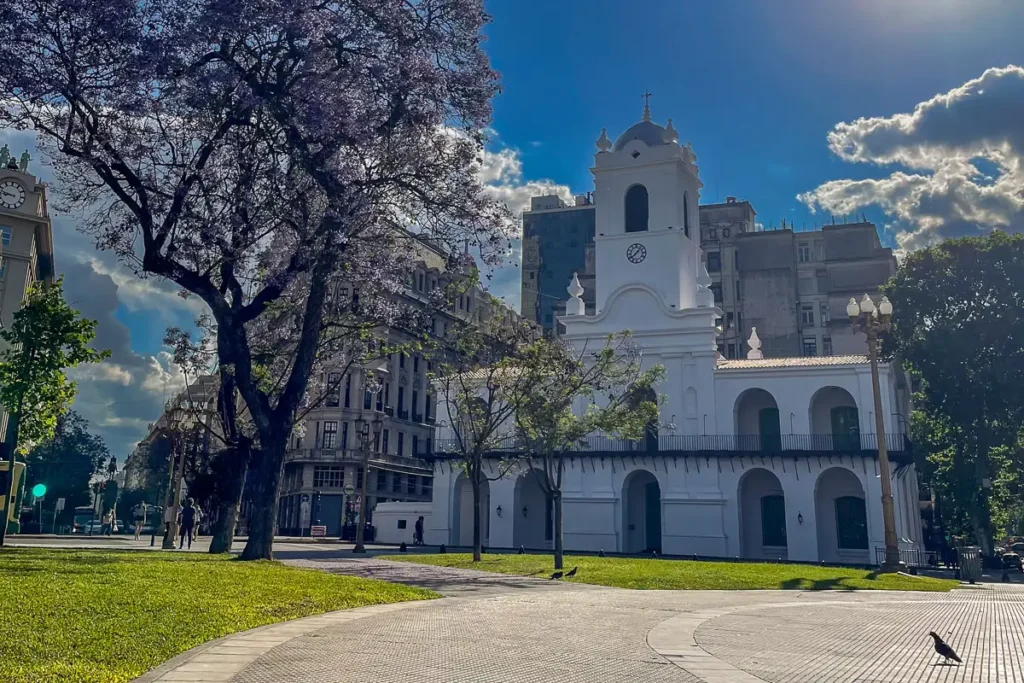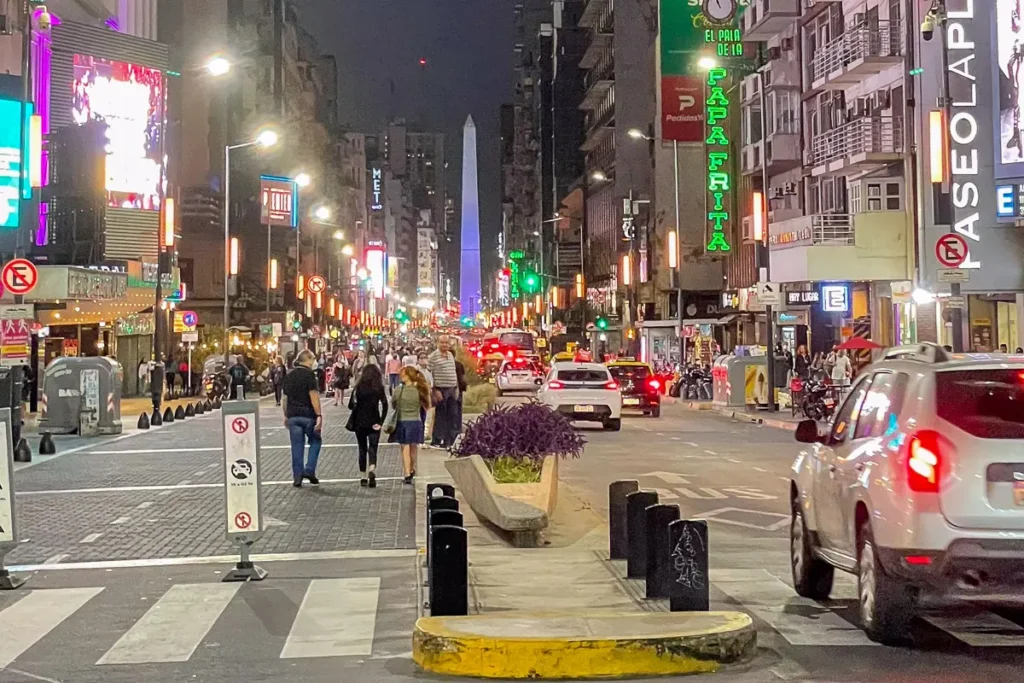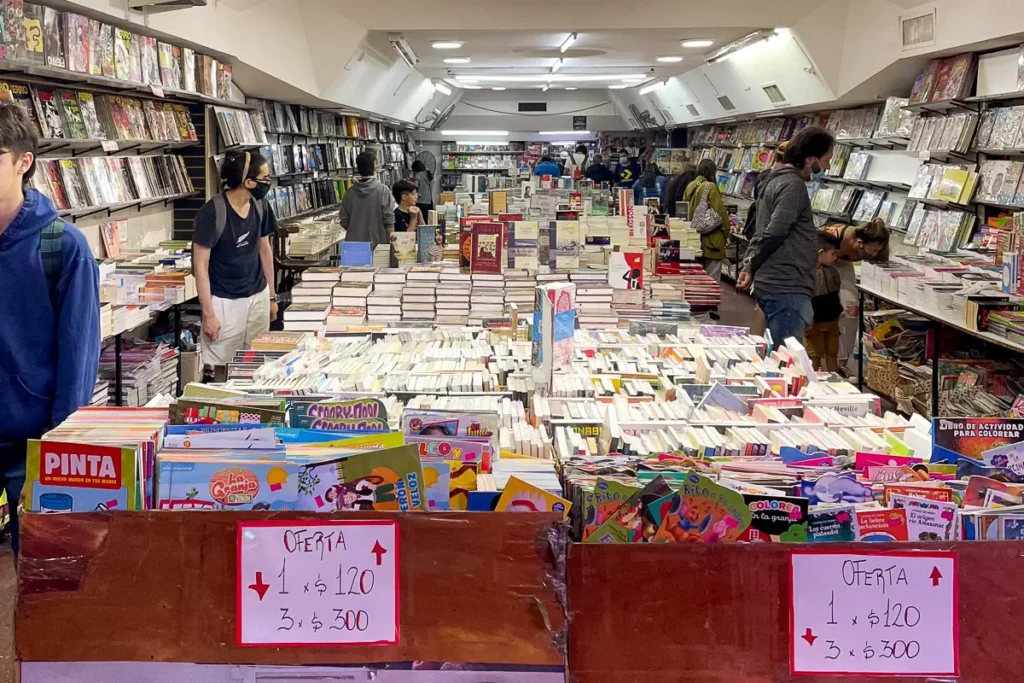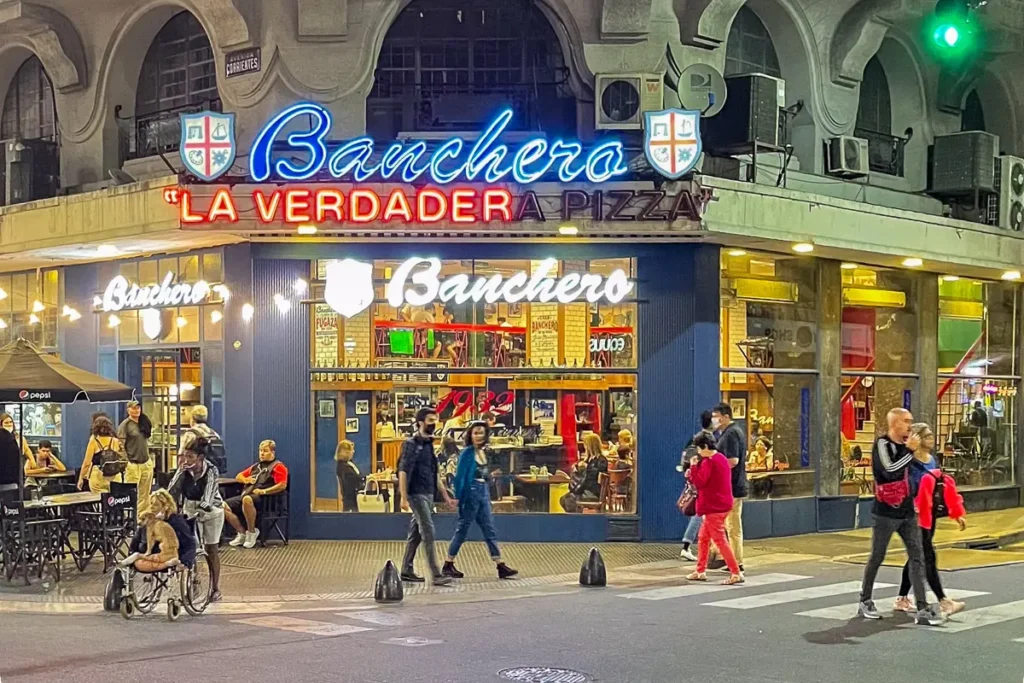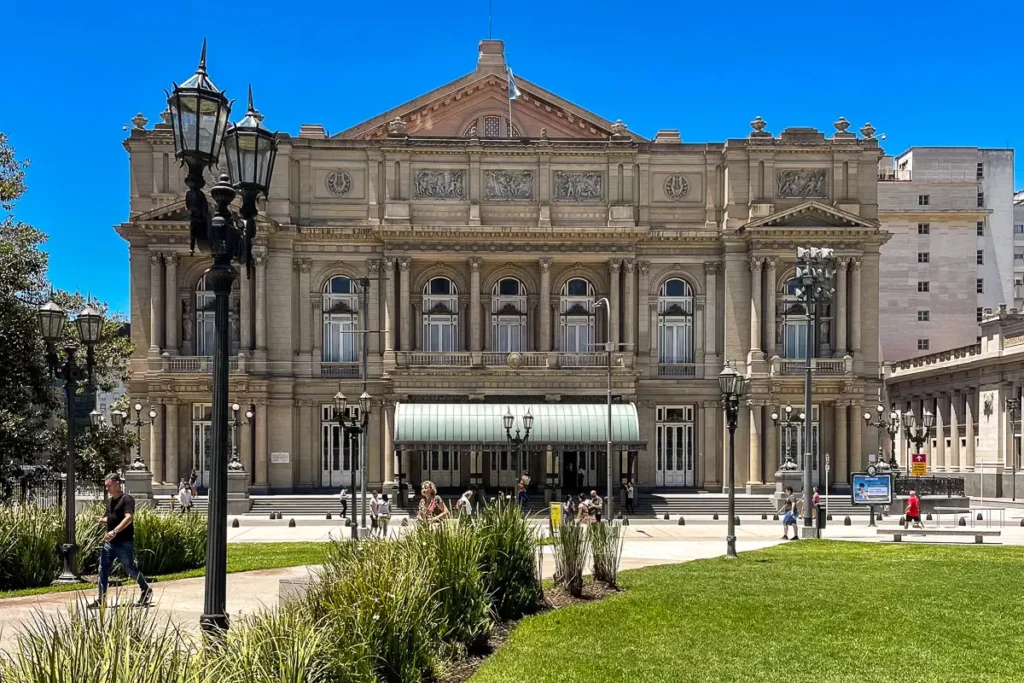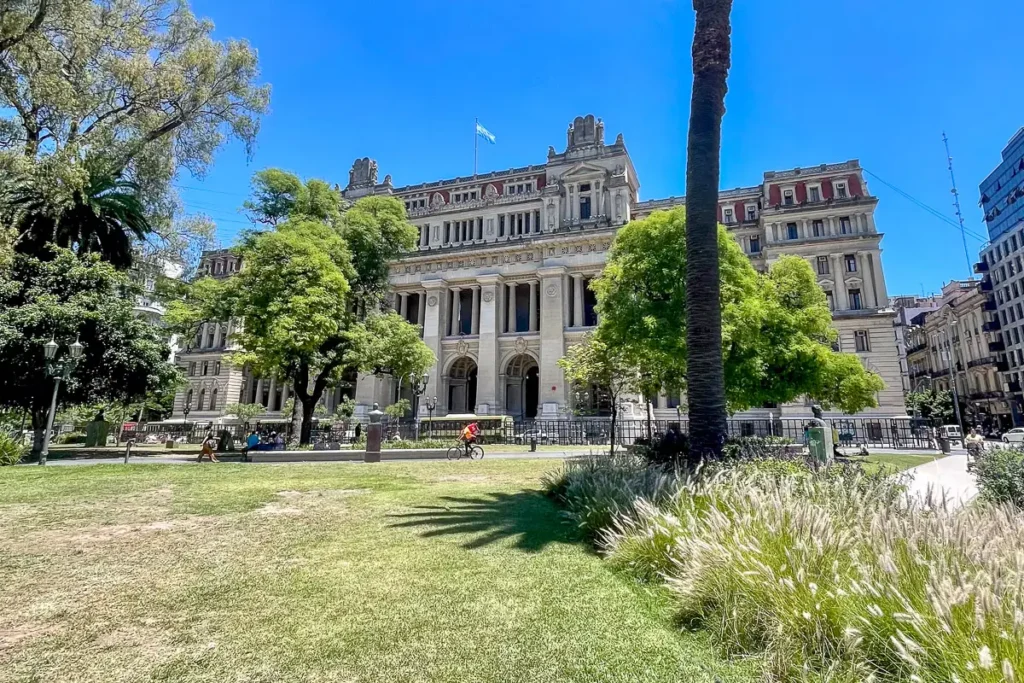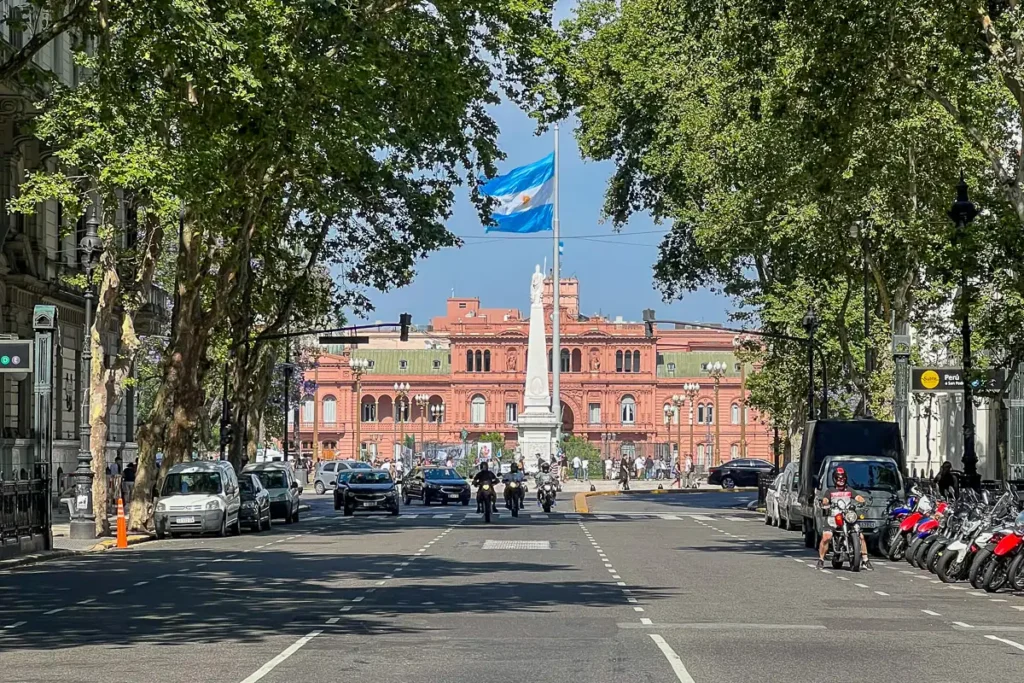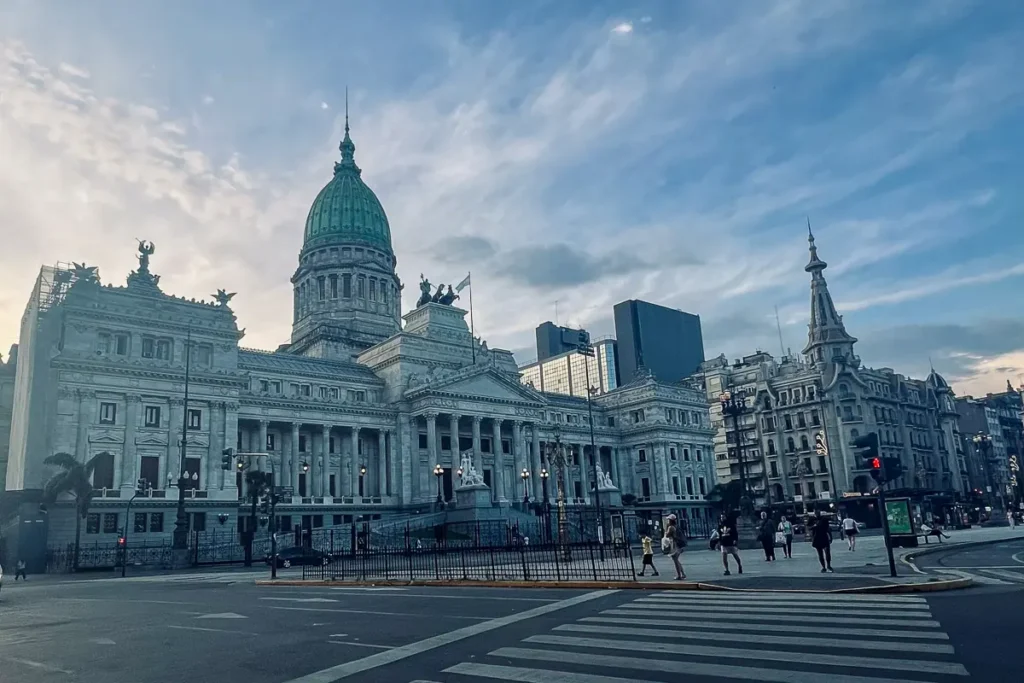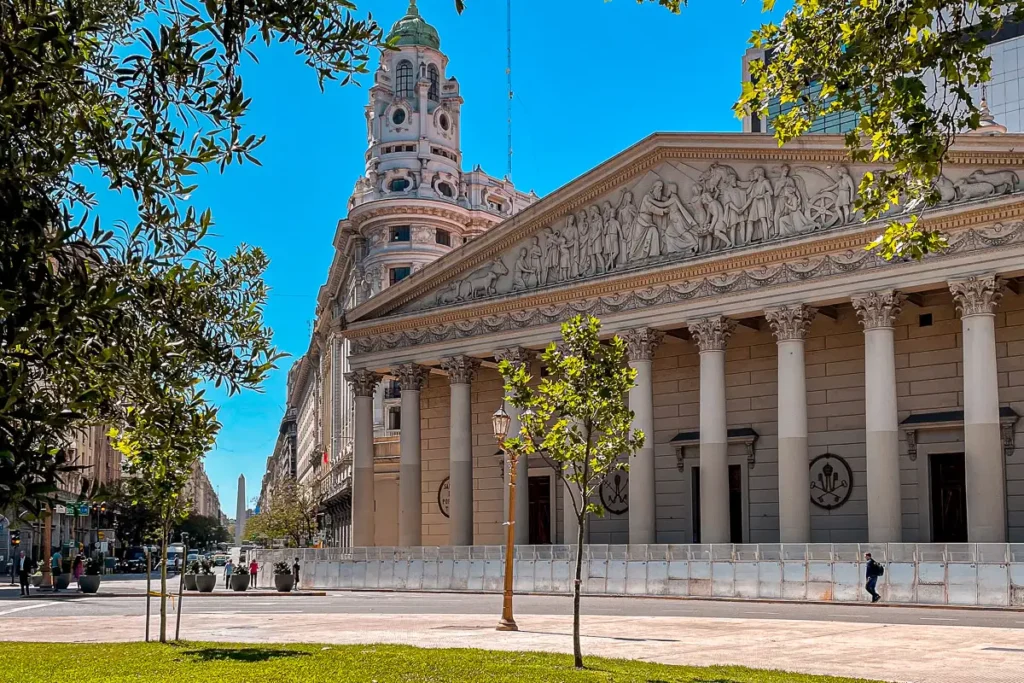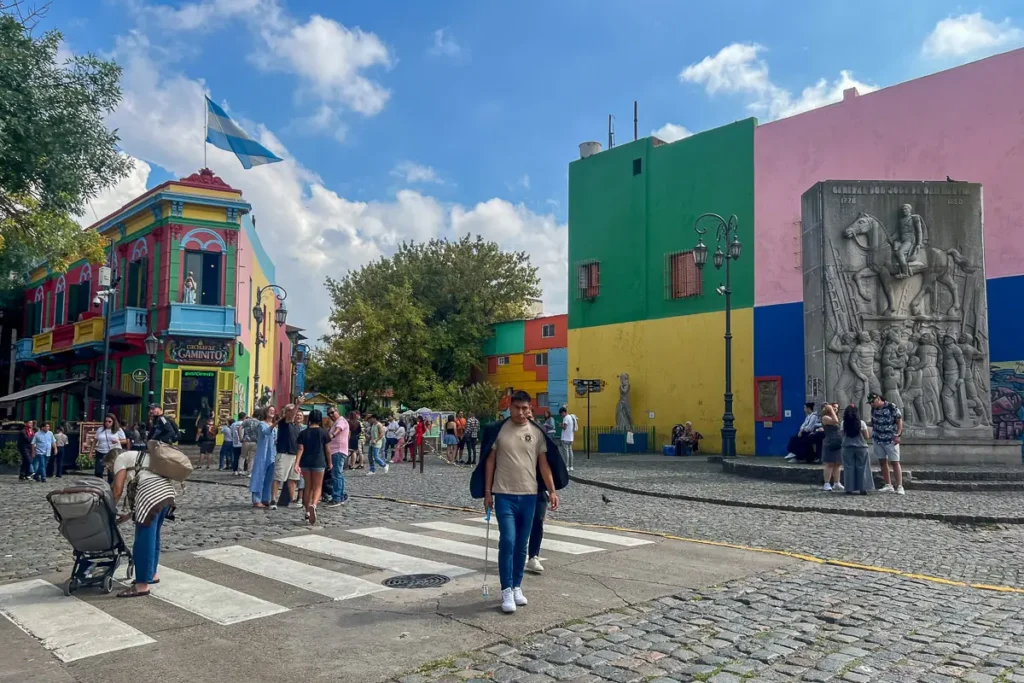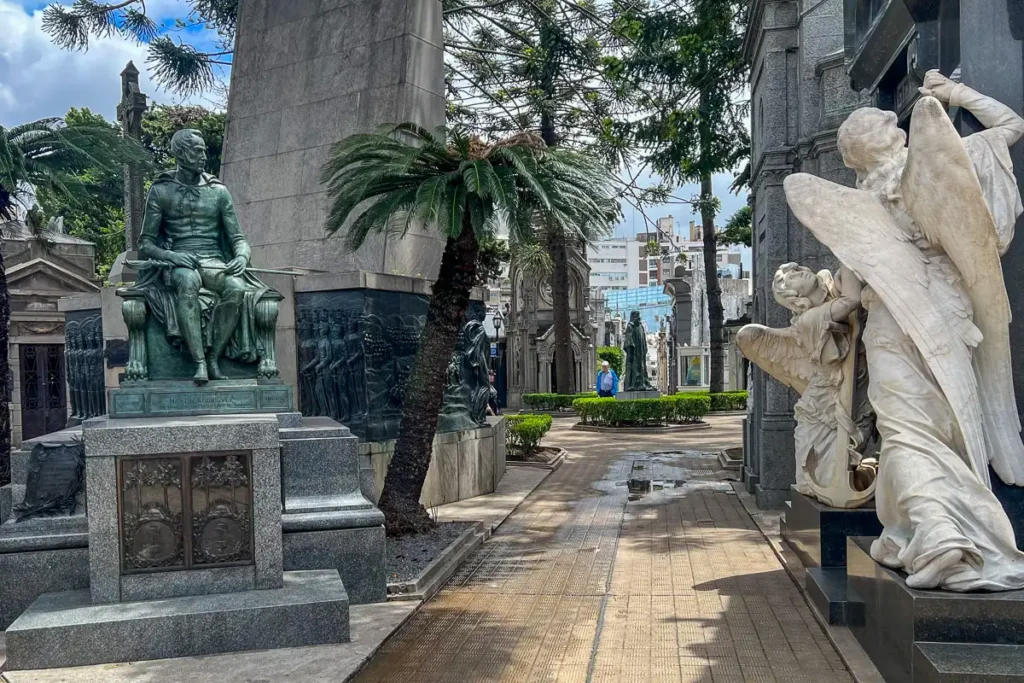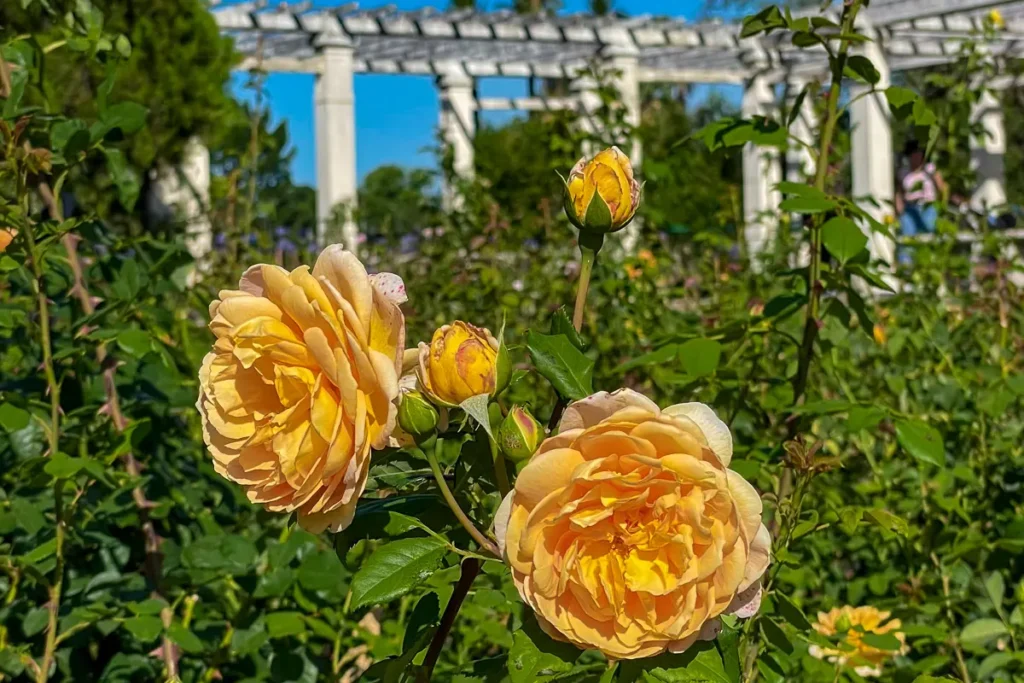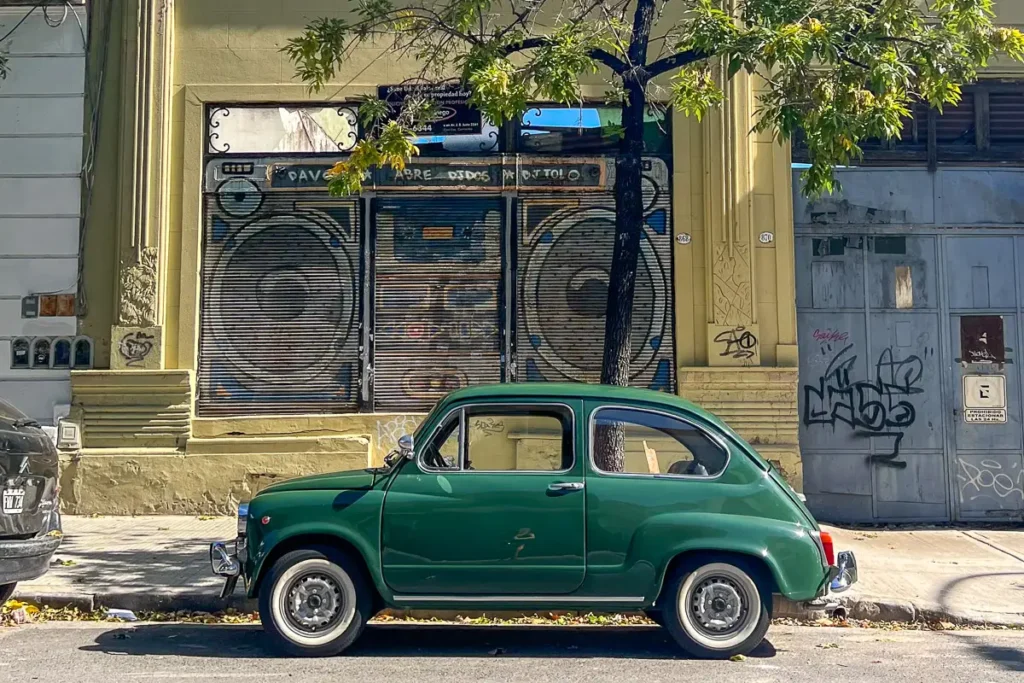Paseo del Bajo & CCK (Centro Cultural Kirchner)
A striking recent addition to Buenos Aires is the Paseo del Bajo, a modern green promenade opened in 2019 behind Plaza de Mayo. Hidden beneath this peaceful walkway runs an underground highway — a smart urban solution that moved heavy traffic out of the city center and gave the area back to pedestrians.
Right beside it stands the Centro Cultural Kirchner (CCK), one of the most impressive buildings in the area. Originally the city’s central post office, this colossal structure stood abandoned for decades until it underwent one of the most ambitious restorations in Buenos Aires’ history. Today, it stands proudly as a cultural landmark — and a stunning example of how architecture can be reborn.
Even if you only stop for a photo of its grand façade and the statue of independence heroine Juana Azurduy, it’s worth passing by. But if you have time, we highly recommend going inside — the guided tours, exhibitions, and concert spaces are breathtaking.
Plaza de Mayo
This emblematic square is not only the oldest in Buenos Aires — it’s also the political heart of the nation. It marks the site where the city was founded and where nearly every major historical moment in Argentina has played out: from revolutions to protests, from rallies to celebrations.
It’s surrounded by monumental buildings:
- Casa Rosada (the presidential palace)
- The Metropolitan Cathedral
- El Cabildo (the former colonial town hall)
- Banco Nación, City Legislature, and more
Plaza de Mayo is the backdrop of the country’s political, economic, and administrative life. The area can be very busy, especially during working hours or when large demonstrations are scheduled. On those days, access may be limited — so check the news or ask a local before heading over.
If you’re in the mood for something tasty nearby, head to La Morada, just a few blocks away. It’s a restaurant and mini-museum, and many locals swear by its empanadas — some of the best in the city.
Avenida Corrientes & El Obelisco
Corrientes Avenue and El Obelisco are two of Buenos Aires’ most recognizable icons. While they may no longer be the absolute center of the city’s action, they’re still full of character and charm.
Corrientes stretches for kilometers, and its vibe changes from one neighborhood to another. But in the downtown area, it’s famously known as la calle que nunca duerme — the street that never sleeps.
Here you’ll find Buenos Aires’ version of Broadway, with historic theaters, cafés, and independent bookstores packed into just a few blocks. In fact, Buenos Aires holds the world record for most bookstores per capita: around 25 bookstores per 100,000 inhabitants — more than cities like Hong Kong and Madrid. Nowhere is this more evident than along Corrientes Avenue.
And then, of course, there’s the pizza. Buenos Aires inherited a deep love for it from its Italian immigrants, and Corrientes is home to several of the city’s most famous pizzerias — El Güerrín, Banchero, Las Cuartetas, Los Inmortales, and El Cuartito, just to name a few.
Many places sell pizza by the slice (al corte), and you can even eat standing at the counter. Be sure to try it with fainá — a chickpea flatbread that’s a must-try local twist.
Teatro Colón
Just a few steps from Corrientes and the Obelisco, you’ll find
Teatro Colón, considered one of the world’s finest opera houses. Its architecture is so striking that you’ll want to photograph it from every angle.
The theater was completed in 1908 — long before the nearby 9 de Julio Avenue — which is why its main entrance faces Plaza Lavalle, not the avenue itself.
But the real magic is inside. Thanks to its acoustics, size, and history, Teatro Colón stands alongside the best opera houses in the world: La Scala in Milan, The Metropolitan Opera in New York, Vienna State Opera, Royal Opera House in London, and the Paris Opera.
You can either join a guided tour of the theater or attend a live performance. Both options are paid, and ticket prices vary depending on the experience — guided tours are affordable, while show tickets range from budget-friendly seats to premium spots with higher prices.All the information and tickets are available on the theater’s official website (www.teatrocolon.org.ar) or at the box office on Tucumán 1171.
Whatever your choice, it’s one of the most memorable stops in the city — and it offers options for every type of traveler and budget.
Palacio de Tribunales & Surroundings
Directly across from Teatro Colón stands Palacio de Tribunales, home to the Argentine Supreme Court. This grand building is a true architectural statement — symmetrical and solemn, with decorative elements referencing Roman justice: scales, fasces, and other symbols of law and order.
If the doors are open, take a peek inside the hall — where you’ll find a 3-meter bronze sculpture of Justice, created by artist Rogelio Yrurtia.
The neighborhood around Tribunales also has a few food and drink gems worth stopping for:
- Cadore, the ice cream shop National Geographic once listed among the world’s best
- El Gato Negro, a traditional café and spice shop with a historic feel
- El Cuartito, a classic pizzeria that’s a local favorite for fugazzeta (stuffed onion pizza)
Avenida de Mayo & Palacio Barolo
Avenida de Mayo was the first grand avenue built in Buenos Aires — and in all of South America. Designed in the late 19th century to connect Plaza de Mayo with Plaza del Congreso, it was inspired by the boulevards of Paris.
As you walk along it, you’ll pass elegant buildings in Art Nouveau, Belle Époque, and Art Deco styles. The avenue is lined with traditional cafés, including the iconic Café Tortoni, founded in 1858. Long lines are common here, but if you go on a weekday morning, you might just walk in.
One of the most fascinating stops is Palacio Barolo, a building inspired by Dante Alighieri’s Divine Comedy. Few buildings in the world are designed around a literary work, and this one offers symbolic details at every level.
There’s a bar on the top floor with stunning views of the avenue, but if you want to explore its interior and the lighthouse, consider booking a guided tour in advance — they tend to fill up quickly.
Congreso & Plaza de los Dos Congresos
At the western end of Avenida de Mayo stands Palacio del Congreso, Argentina’s legislative palace. This monumental building occupies an entire block and is topped by a majestic dome — one of the largest of its kind in Latin America.
In front of it, you’ll find Plaza de los Dos Congresos, one of the most photogenic spots in the city. The square features fountains and several important monuments, the most prominent being:
- The Monumento de los Dos Congresos, symbolizing national unity
- A replica of Rodin’s The Thinker, always a favorite with visitors
With its symmetrical design, sculptures, and formal landscaping, the whole plaza has a very European feel — perfect for a pause, a photo, or a quiet moment after a busy walk.
Conclusion: From Foundation to Present Day
This self-guided route connects Buenos Aires’ origins with its most ambitious architectural dreams. You’ll walk past buildings that shaped the country’s identity, spaces that witnessed major historical events, and corners that locals still love — from book-filled cafés to late-night pizzerias.
It’s a journey through power, art, culture, and daily life. And it shows just how deeply Buenos Aires’ past lives in its present.
When you’re ready for something different, our next self-guided tour heads into the unexpected — local rituals, artisan markets, and quiet corners beyond the spotlight.
